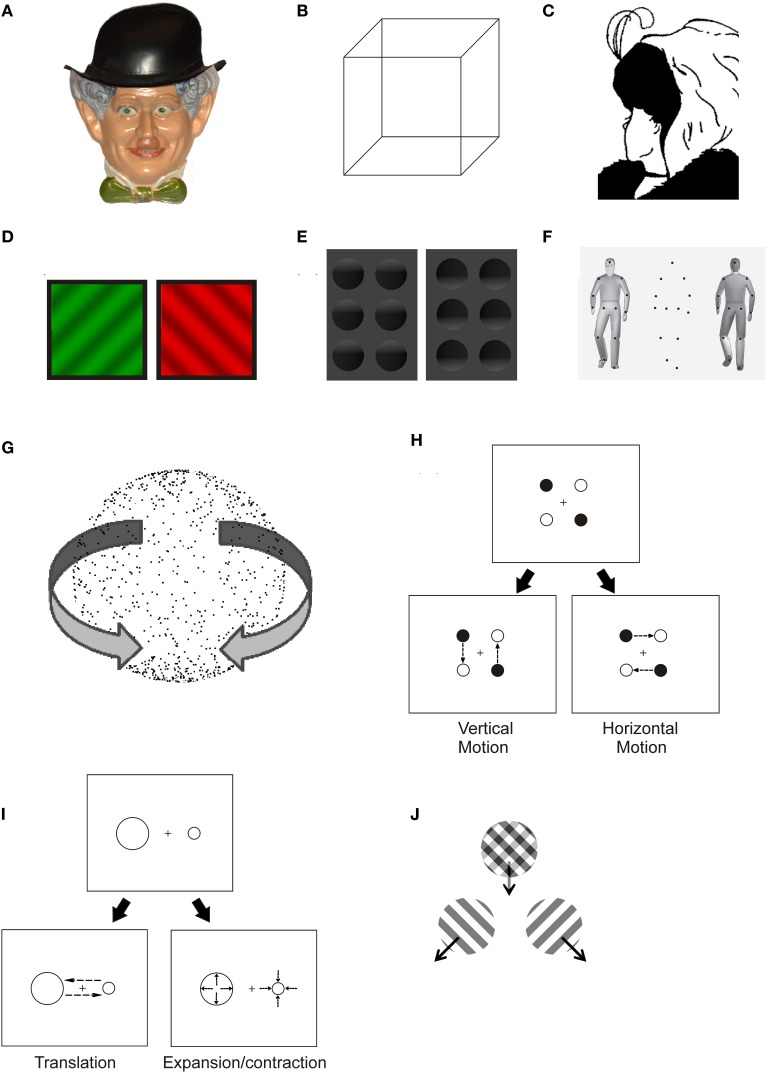Figure 1.
Examples of ambiguous stimuli. (A) Hollow-face illusion: a concave mask looks like a convex face. (B) It is not possible to state which side of the Necker Cube is facing the observer: perspective-based reversals occur between two possible configurations of the cube. (C) Hill's Wife/Mother-in-law ambiguous figure: the image can be alternatively perceived as a young or as an old lady. (D) Binocular rivalry: two different monocular images are displayed to each eye, causing subjective perception to alternate between the two. (E) Shape from shading: under the implicit assumption that light comes from above in a scene, the shading pattern becomes responsible for the perception of convexity or concavity of a visual object. (F) The ambiguous point-light walker is a particular instance of structure-from-motion (see G): when motion information is added to the display, the dots are perceived as a walker facing toward or away from the observer. (G) Static depiction of an ambiguously rotating structure-from-motion sphere: when motion information is added to the display, the stimulus is seen as a three-dimensional sphere and opposite directions of motion alternate in perception. (H,I) Two instances of ambiguous apparent motion: in the bistable motion quartet (H), single dots displayed in succession at a fixed frame rate induce the impression of vertical or horizontal translation. In (I), rather than perceiving two static dots of different size being flashed at different positions on the screen, the viewer perceives two dots exchanging positions (translation) or two dots expanding and contracting at two separate locations. (J) When two drifting sinusoidal gratings are superimposed, they can be perceived as either a coherently moving plaid pattern or as two semi-transparent gratings moving on top of each other in different directions.

